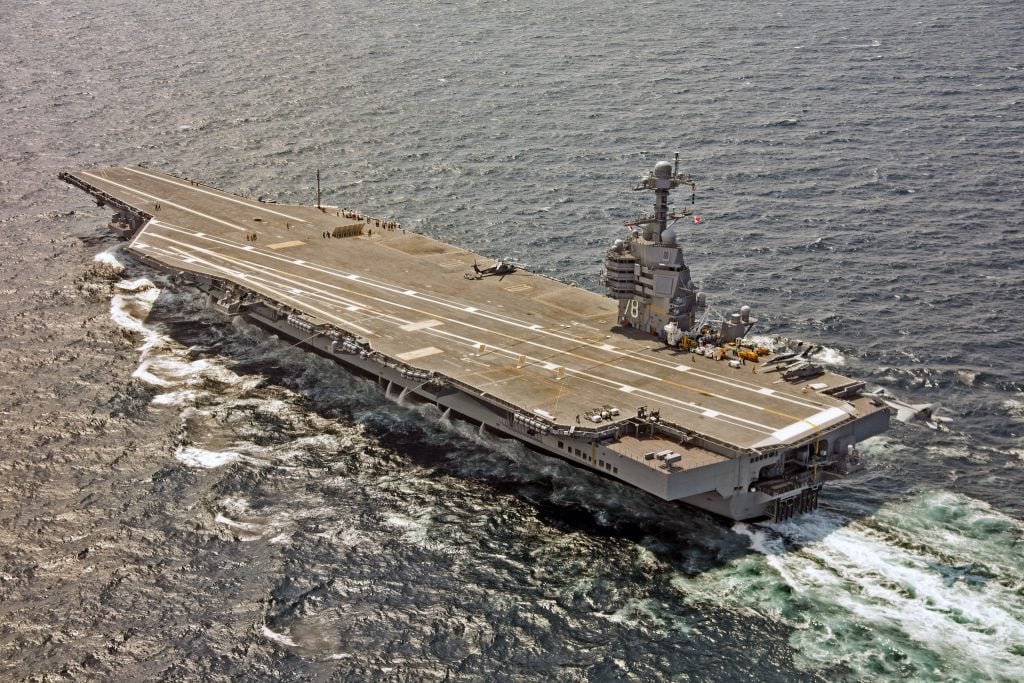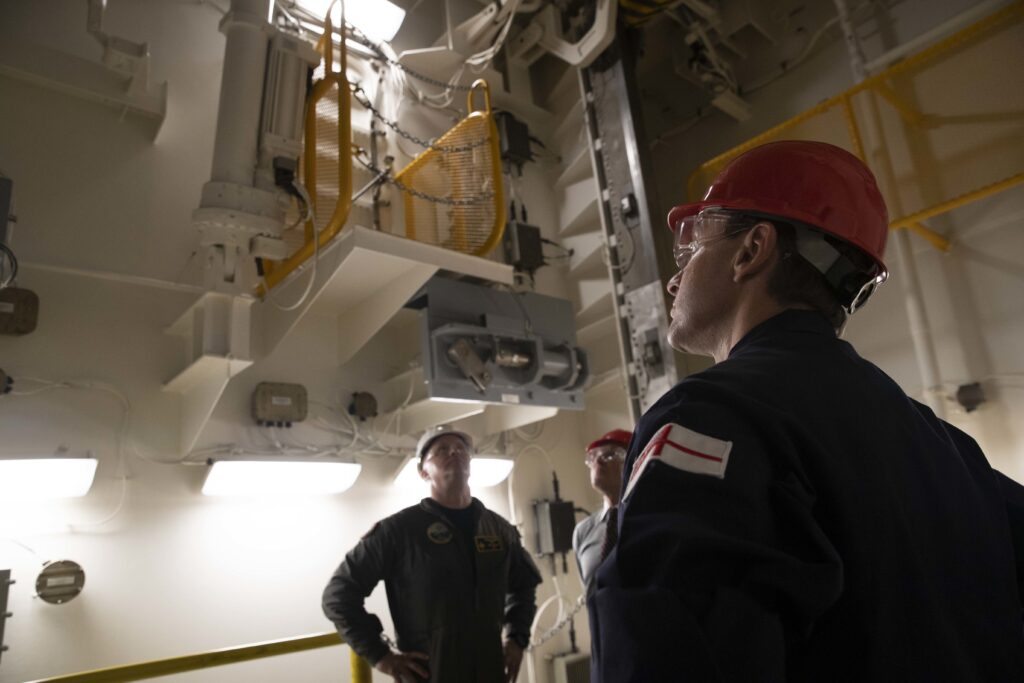
The USS Gerald R. Ford
WASHINGTON: Increasingly concerned over technological problems plaguing its new $13 billion nuclear-powered aircraft carrier, the Navy has dispatched a unique team of civilian and government experts to the USS Gerald R. Ford in a new attempt to understand what is happening.
The experts, pulled from outside the defense industry in order to provide a fresh perspective, were selected for their expertise in working with complex electromagnetic systems, a technology that has proved daunting for the Navy and shipbuilder Huntington Ingalls at its Newport News Shipbuilding facilities in Virginia.
The team, which Navy officials have declined to identify, started work last month on getting the ship’s 11 electromagnetic weapons elevators up and running, a task that the Secretary of the Navy has already staked his job on, telling President Trump he can fire him if they’re not in working order.
Currently, only two of the ship’s new weapons elevators are operational, meaning sailors are unable to quickly move munitions from belowdecks to aircraft ready to take off.
“We have a full court press on the advanced weapons elevators,” said James Geurts, assistant secretary of the Navy for acquisition, in a statement. “We’ve gathered a team of experts on the carrier right now, which will work with the shipbuilder to get Ford’s weapons elevators completed in the most efficient timeline possible.” Significantly, Geurts said, the team “will also recommend new design changes that can improve elevator activities for the rest of the Ford class.” The group, the Navy said, has worked in electromagnetic systems, fabrication and production control, software, systems integration, and electrical engineering in the commercial sector.
The admission of serious design flaws with one of the carrier’s most vaunted new technologies is another acquisition and maintenance-related black eye for the Navy, which is struggling to get ships through routine repair availabilities and has seen critical flaws pop up in the missile tubes aboard its next-generation Columbia-class nuclear submarines.
Navy officials point out that the electromagnetic elevators are a significant new technology that has proven reliable in early testing, and should be viewed as a leap-ahead effort that will come with some expected growing pains. The new elevators are designed to lift 20,000 pounds of munitions at a rate of 150 feet per minute, as opposed to the current Nimitz-class elevators which move 10,500 pounds at 100 feet per minute.
But perfecting that new technology has so far proven difficult.

British and American officers observe an advanced weapons elevator during a tour of the USS Gerald R. Ford.
The schedule slip has put Navy Secretary Richard Spencer in an awkward position, as he previously related he told President Trump, “I asked him to stick his hand out; he stuck his hand out. I said, let’s do this like corporate America. I shook his hand and said, the elevators will be ready to go when she pulls out or you can fire me.”
The issues with the Ford have also caught the attention of Sen. Jim Inhofe, chairman of the Senate Armed Services Committee, who said recently that delays with the elevators present a “serious readiness gap” if they eventually delay the ship’s first deployment slated for 2021.
There is little chance the ship gets the elevators working by October, as the problems continue to vex engineers.
Overall, the eleven weapons elevators on the ship consist of four upper elevators and seven lower elevators, with the two working lifts among the upper elevators. The lower elevators are a more difficult problem, as they pass through several decks, have a number of hatches to move through, and must repeatedly hold water tightness as they move through a series of sequences to align with one another.
“The two upper stage elevators have absolutely operated as designed,” said Lt. Cmdr. Chabonnie Alexander, Ford’s Ordnance Handling Officer, in a statement. “We operate the elevators 10 times a day, five days a week” and the ship’s crew is becoming “better able to anticipate and diagnose any technical issues that may arise.”
The priority is to get two of the lower elevators running next, so whatever fixes are made can hopefully be repeated in the rest of the lower elevators as soon as possible.
One of the issues, however, is that the Navy installed the elevators without first refining their operation on a land-based prototype, meaning their installation on the first ship in the class has, in effect, acted as the prototype for the entire class of ships.
To get at some of those issues, the Navy is constructing a land-based test site at a naval facility in Philadelphia slated to be finished next year, and it is building what service officials are calling a “digital twin” — a detailed computer model constantly updated with data from the real-world systems — in Newport News that will be used for troubleshooting issues. “Both systems will allow the Navy and shipbuilder to mature the technology and aide in troubleshooting,” Navy spokesman Capt. Danny Hernandez said.
That extra work on the forthcoming ships in the class is critical, as the Navy has already committed another $15.4 billion to start work on the third and fourth carriers of the class.
